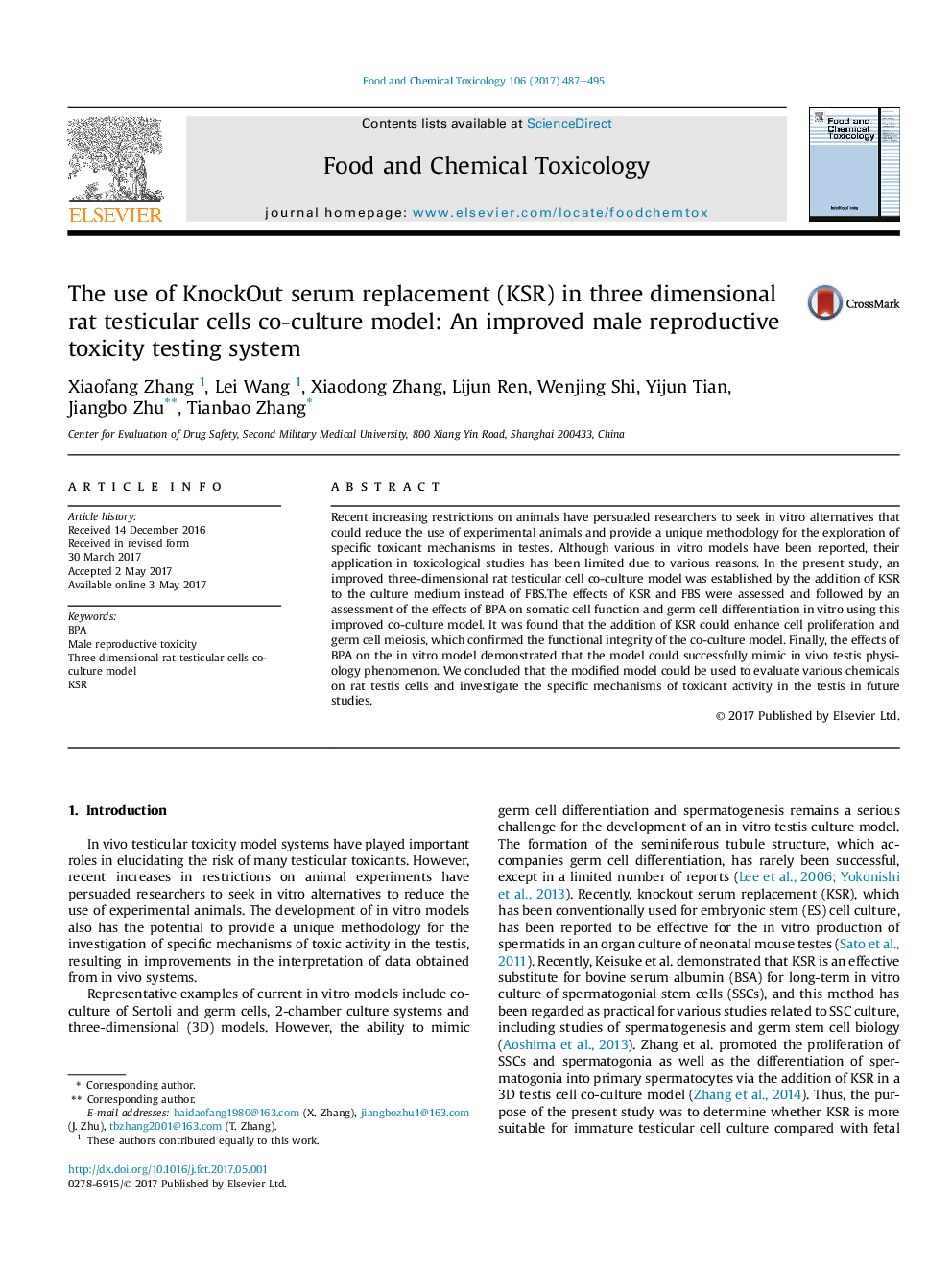| Article ID | Journal | Published Year | Pages | File Type |
|---|---|---|---|---|
| 5560146 | Food and Chemical Toxicology | 2017 | 9 Pages |
â¢An improved three dimensional rat testicular cells co-culture model was set up successfully.â¢Testicular cells in the improved model could reproduce their function in vivo.â¢Toxicological effects on testis in vivo of BPA were repeatable in this improved model.â¢This model can be used for the evaluation of chemicals' toxic action and mechanism on rat testis cells.
Recent increasing restrictions on animals have persuaded researchers to seek in vitro alternatives that could reduce the use of experimental animals and provide a unique methodology for the exploration of specific toxicant mechanisms in testes. Although various in vitro models have been reported, their application in toxicological studies has been limited due to various reasons. In the present study, an improved three-dimensional rat testicular cell co-culture model was established by the addition of KSR to the culture medium instead of FBS.The effects of KSR and FBS were assessed and followed by an assessment of the effects of BPA on somatic cell function and germ cell differentiation in vitro using this improved co-culture model. It was found that the addition of KSR could enhance cell proliferation and germ cell meiosis, which confirmed the functional integrity of the co-culture model. Finally, the effects of BPA on the in vitro model demonstrated that the model could successfully mimic in vivo testis physiology phenomenon. We concluded that the modified model could be used to evaluate various chemicals on rat testis cells and investigate the specific mechanisms of toxicant activity in the testis in future studies.
